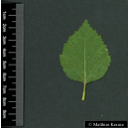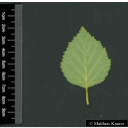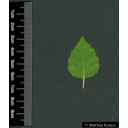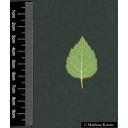Useful information about the taxon (species, subspecies, variety...)
Betula pubescens Ehrh. 1789
Betulaceae
(APG IV)downy birch, brown birch, moor birch, mountain birch, white birch, hairy birch
Akzessionnummer: SP-GB-047-10486
Pflanzjahr: 2015
Taxon concept: The Plant List (2014), version 1.1
Distribution: Canada, Newfoundland, southern Greenland, Iceland, the British Isles, Europe; Turkey, Caucasus; West and East Siberia
Betula pubescens Ehrh. - Accepted: Betula pubescens Ehrh. bei The Plant List (2010); Familie: Betulaceae (APG III)Betula pubescens Ehrh. - Accepted: Betula pubescens Ehrh. bei The Plant List (2014), version 1.1; Familie: Betulaceae (APG III)Betula pubescens Ehrh. - Accepted: Betula pubescens Ehrh. bei Schmeil-Fitschen 2019; Familie: Betulaceae (APG IV)Betula pubescens Ehrh. - Accepted: Betula pubescens Ehrh. bei BfN Checklist Flora DE; Familie: Betulaceae (APG IV)Betula pubescens Ehrh. - Accepted: Betula pubescens Ehrh. bei World Flora Online - APG IV (Angiosperms); Familie: Betulaceae (World Flora Online - APG IV (Angiosperms))
- Flowers
- monoecious; male and female flowers in catkins
- Flower ecology
- wind-pollinated (anemophilous)
- Life form
- woody, tree or shrub
- Foliage persistence
- deciduous
- Fruits
- winged nut fruit (samara)
- Fruit ecology
- wind-dispersed (anemochorous)
- Soil conditions
- usually on moist, moderately nutrient-rich, humus-rich, acidic turf soils
- Root type
- heart-shaped root system
- Natural occurrence (habitat)
- moor forests and carrs, pollarded and pioneer woodlands, floodplains, along streams, hill-side flushes, transition bogs, peaty hollows
- Vegetation typ and synecology (plant community)
- temperate, mesophytic broad-leaved and mixed forests to boreal forests and subpolar tundra (northern limit of tree growth)
- Constraints according radiation (light)
- intolerant of shade
- Usage
- wood is used for making paper, canoe skins, furniture and plywood; bark is used for making drinking vessels and roofing tiles; tar-oil obtained from the white bark can be used as an insect repellent and as a shoe polish
Erhardt, W., Götz, E., Bödeker, N. & Seybold, S. (2008): Der große Zander. Enzyklopädie der Pflanzennamen. Band 2. Arten und Sorten. Eugen Ulmer KG, Stuttgart (Hohenheim), 18. Aufl., 2103 S.; Haider, M. et al. (2005): Wildbienenkataster. See: https://www.wildbienen-kataster.de; Maurizio, Anna et al. (1982): Nektar und Pollen - die wichtigsten Nahrungsquellen der Honigbiene. 4. Ehrenwirth, München, 3, überabeitete Auflage; Pritsch, Günter et al. (1985): Bienenweide.. Neumann-Neudamm, Melsungen; Ruppertshofen, Heinz et al. (1995): Der summende Wald - Waldimkerei und Waldhygiene.. Ehrenwirth, München, 8., völlig neubearb. und erw. Aufl.; Schick, B. & Spürgin, A. (1997): Die Bienenweide. Eugen Ulmer Verlag, Stuttgart, Auflage: 4., völlig neubearb. u. erw. A., 216 S. 978-3800174188.; Westrich, P. et al. (2018): Die Wildbienen Deutschlands.. Ulmer Verlag ISBN 978-8186-0123-2.;
Diese Webseite verwendet Google Maps, um Karten und Standorte von Pflanzen in den Hohenheimer Gärten anzuzeigen. Dadurch werden unter Umständen Daten an Google weitergeleitet, was mit einer Verarbeitung Ihrer personenbezogenen Daten verbunden sein kann. Die Datenschutzerklärung von Google finden Sie hier: Datenschutzerklärung von Google




